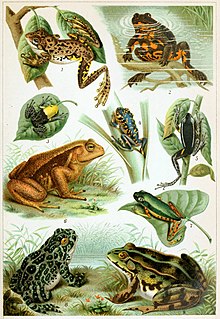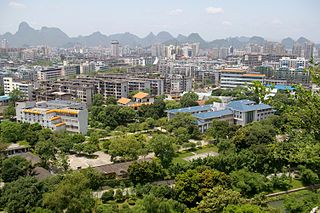| Leptolalax maoershanensis | |
|---|---|
| Scientific classification | |
| Kingdom: | Animalia |
| Phylum: | Chordata |
| Class: | Amphibia |
| Order: | Anura |
| Family: | Megophryidae |
| Genus: | Leptolalax |
| Species: | L. maoershanensis |
| Binomial name | |
| Leptolalax maoershanensis Yuan, Sun, Chen, Rowley, and Che, 2017 | |
Leptolalax maoershanensis is a species of frog in the family Megophryidae. Its type locality is Maoershan Nature Reserve (广西猫儿山国家级自然保护区) in Guilin, Guangxi, China.

A frog is any member of a diverse and largely carnivorous group of short-bodied, tailless amphibians composing the order Anura. The oldest fossil "proto-frog" appeared in the early Triassic of Madagascar, but molecular clock dating suggests their origins may extend further back to the Permian, 265 million years ago. Frogs are widely distributed, ranging from the tropics to subarctic regions, but the greatest concentration of species diversity is in tropical rainforests. There are over 7,000 recorded species, accounting for over 85% of extant amphibian species. They are also one of the five most diverse vertebrate orders. Warty frog species tend to be called toads, but the distinction between frogs and toads is informal, not from taxonomy or evolutionary history.

The Megophryidae are a large family of frogs native to the warm southeast of Asia, from the Himalayan foothills eastwards, south to Indonesia and the Greater Sunda Islands in Maritime Southeast Asia, and extending to the Philippines. As of 2014 it encompasses 180 species of frogs divided between 9 genera. For lack of a better vernacular name, they are commonly called megophryids.

Guilin, formerly romanized as Kweilin, is a prefecture-level city in the northeast of China's Guangxi Zhuang Autonomous Region. It is situated on the west bank of the Li River and borders Hunan to the north. Its name means "Forest of Sweet Osmanthus", owing to the large number of fragrant sweet osmanthus trees located in the region. The city has long been renowned for its scenery of karst topography and is one of China's most popular tourist destinations.